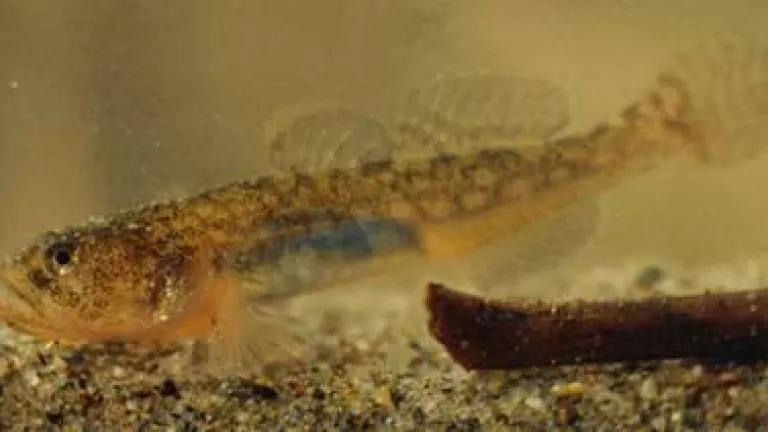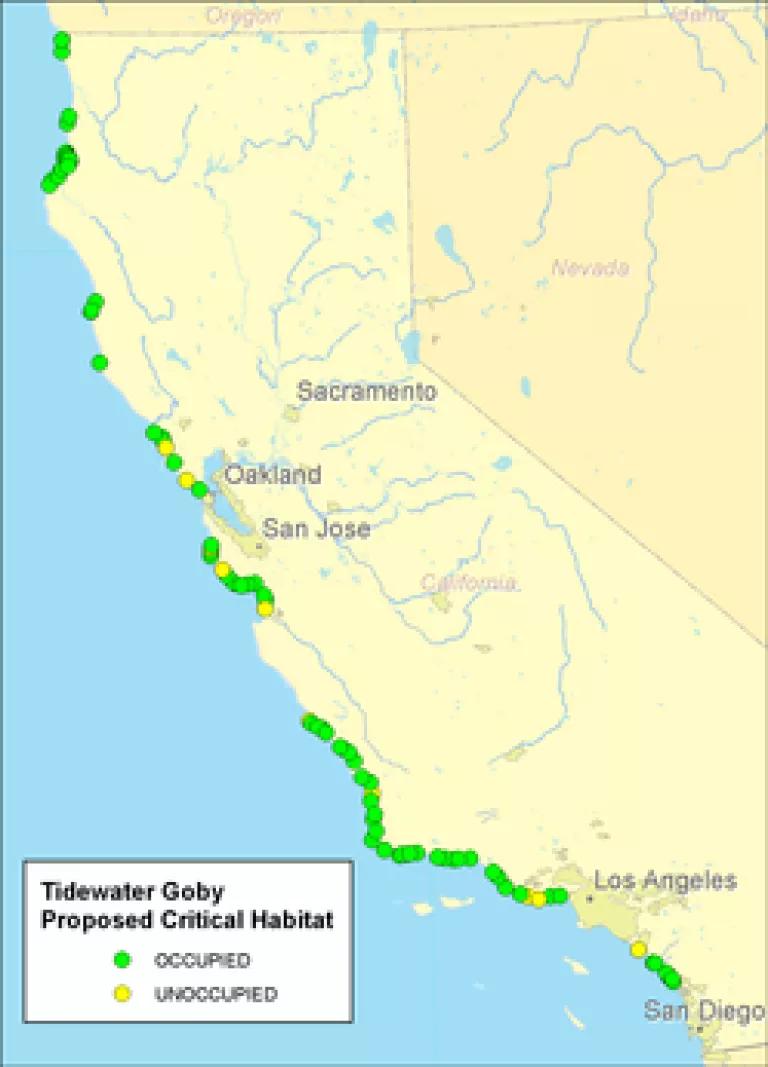A big win for a little fish: new critical habitat designation gives added protection for the tidewater goby and California's coast

Little critters can have a big impact. Take the tidewater goby. Only a few inches long with large, dusky fins, the tidewater goby is unique. It is the only species in its genus and it can only be found in the brackish salt marshes, lagoons and streams along California's coast. These are some of the most endangered ecosystems in the Golden State. Thanks to the tidewater goby, some of them just got a new lifeline. That’s because on Wednesday, the U.S. Fish and Wildlife Service proposed a new “critical habitat” designation for the little fish. In making the decision, the Fish and Wildlife Service also set an important precedent.
After the tidewater goby was protected by the federal government under the Endangered Species Act, scientists put together a "recovery plan" for the fish. The plan recommended that tidewater gobies be introduced to suitable habitat up and down the California coast. It recommended this approach because the tidewater goby exists in dispersed "meta-populations”--depending on the weather, food availability, and a host of other factors gobies in individual streams and lagoons periodically disappear when times are tough and then reappear when conditions become more favorable. The problem for the goby is that their distribution has become patchy and gobies have lost the ability to naturally recolonize all of their former habitat (the little guys can't survive for very long in the ocean).
When the federal government originally proposed designating critical habitat for the goby, however, it refused to protect any unoccupied goby habitat. We thought that was a problem, not only because it was directly contrary to the recovery plan's recommendations, but also because protecting unoccupied habitat is one of the principal benefits of identifying "critical habitat" under the Endangered Species Act (at least, in theory). In practice the Fish and Wildlife Service has rarely designated unoccupied habitat as critical. Added to all this was the fact that climate change, and the rising sea levels that will accompany it, pose an obvious threat to the goby, which lives in low-lying lands where salt and fresh water mix.
So we sued and the Fish and Wildlife Service agreed to take another look. On Wednesday the Service went a long way towards fixing both

these problems. First, the agency expanded the amount of habitat protected by the goby by 20% (from about 10,000 to 12,000 acres--mostly small sections up and down the coast). Second, the agency included 10 currently unoccupied lagoons and creeks, stretching from Los Angeles to Marin counties, which will now get added protections. Finally, the Fish and Wildlife Service justified its protection of unoccupied habitat in part because of the threat posed by climate change, writing: "We have determined that the specific areas within the geographical area occupied at the time of listing are not sufficient to meet the recovery goals for the species because...(3) We anticipate a further loss of habitat in the future due to sea-level rise resulting from climate change." As far as I know, that's the first time the Service has ever protected unoccupied habitat at least in part in response to climate change.
That's a big deal, and a big win. And it means places like Bolinas Lagoon (pictured below) will get some added protections.
Below is a complete list of the areas where unoccupied habitat will be protected. If you want to look at the designation in an interactive Google Earth Map, click here:Tidewater Goby Proposed Critical Habitat Google Earth Map.kmz
- Arroyo Sequit (Los Angeles County)
- Zuma Canyon (Los Angeles County)
- Aliso Creek (Los Angeles County)
- Oso Flaco Lake (San Louis Obispo County)
- Arroyo de la Cruz (San Louis Obispo County)
- Salinas River (Monterey County)
- Pomponio Creek (San Mateo County)
- Waddell Creek (Santa Cruz County)
- Walker Creek (Marin County)
- Bolinas Lagoon (Marin County)

